Located in Thebarton, Adelaide Gaol is one of the oldest buildings in South Australia and one of the longest continually operating prisons in Australia, opening in 1841 and closing in 1988. During this time it housed over 300 000 male and female prisoners and saw forty five executions. Designed by George Strickland Kingston and based on England’s Pentonville Prison, today the Adelaide Gaol still retains much of its early character despite numerous additions and alterations. The Adelaide Gaol currently operates as a tourist attraction, museum and function centre.
A Colony Without Crime?
Following his own three year prison sentence Edward Gibbon Wakefield developed a model of systematic colonisation which resulted in the 1836 founding of the Colony of South Australia, a place where land was sold rather than granted and to which no convicts would be transported. It was expected that this free colony would attract a better, more responsible class of people and so no provision was made for a gaol in the original plans for Adelaide and any criminals that were arrested were held in irons upon ships or within tents.
However, with a growing prisoner population, and an increased fear that escaped convicts from eastern Australia would find their way to the Colony, more secure and permanent arrangements were soon needed. In 1837 offenders waiting for trial were held in a temporary wooden stockade and convicted felons were transported to Van Diemen’s Land (Tasmania) or to Sydney, New South Wales. Transportation continued until 1851, when British transportation laws changed, with over 200 men and women sentenced during this time (Scheiffers 2002:1).
The stockade was very unhygienic (many prisoners suffered from dysentery and rheumatism) and very soon after its erection became dangerously overcrowded with 100 prisoners committed in 1838 where provision had been made for only twenty eight. Consequently, in May 1840 George Strickland Kingston was commissioned to design a permanent prison for the Colony. Construction was to take priority over all other planned buildings, with a design based on England’s Pentonville Prison.
Building the Adelaide Gaol: 1840-1850
In July 1840, successful tenderers Borrow and Goodier, began construction on the new gaol using stone from the nearby quarry, red bricks made on site, and imported sandstone from Van Diemen’s Land for coping, sills and towers. On Christmas Eve 1840 the first fourteen prisoners were moved from the temporary gaol to the new gaol, which was still under construction, with the remainder transferred in early 1841.
Despite original estimated costs of £7 000, by 1841 the costs had exceeded £16 000 with only half the work completed, mostly due to changes to the plans by Governor Gawler. George Grey, who replaced Gawler that year, immediately stopped construction and a court case ensued when Grey refused to honour payments. Notwithstanding these problems, the Gaol was officially completed later that year.
1845 saw the first call for repairs at the Gaol and the ordering of more work, including gravelling of yards and whitewashing. Regular whitewashing of stone and brickwork continued throughout the Gaol’s life, in fact, in April 1857 the walls were reportedly whitewashed every week (The South Australian Register, 13 April 1857 p.2).
The outer wall was completed in 1846 and by 1848 most of the rest of the gaol was finished. The final sections of the inner wall were completed during this time and these provide a rich source of prison graffiti, including a number of images of ships and a variety of sundials.
By 1850 the planned demi-octagon was completed, forming most of the basic shape of the prison today.
Expansion and Improvement: 1850-1900
The second half of the 19th century saw a series of expansions, renovations and improvements to the Gaol, beginning with the construction of a work yard on the western side in 1853. In 1854 Yatala Labour Prison opened and Adelaide Gaol became primarily a prison for remand and short term prisoners not sentenced to heavy labour. Many prisoners were employed within the prison bakehouse and kitchen or as cleaners and maintenance workers. Others were permitted to work outside the walls in the vegetable gardens or olive plantations, or were employed in building roads, planting trees or damming the Torrens (Hill 2006:6). 1854 also saw the death of William Baker Ashton, the first Governor of the Adelaide Gaol, in his upstairs apartment in the gaol’s administrative building. Being a rather portly man, and with the added complication of rigor mortis, Ashton was unable to be moved down the building’s narrow staircase, resulting in his body being removed through a window and lowered to the ground.
In 1858 the ground and first floor of a new multi-storey cell block was constructed between Yards 1 and 2, with a third floor added in 1862 and new balconies in 1881. In 1862 a bluestone cell block was erected between Yards 4 and 5, and in 1864 part of the original central 1841 cell block was demolished to make way for another two storey building between Yards 3 and 4. 1864 was also the year that the Gaol was supplied with gas for lighting.
A new cell block (the Remand Centre) was constructed in 1871, with cells facing into a central corridor rather than back to back. This was followed in 1872 by stage one of a new service wing, stage two of which was completed by 1879. This wing, to the south of the original prison and now sitting between the New Building and the rest of the Gaol, has undergone many alterations and at closure housed the bakery and kitchens.
With up to three prisoners sharing cells in 1875 (Scheiffers 2002:28) there was increasing concern over overcrowding and poor conditions, which resulted in the construction of the New Building in 1879. Also in 1879, a fire in the central 1841 cell block, between Yards 3 and 4 required extensive repairs and a new roof. The space was repurposed as a dining room in 1881, then converted to a shower block in the mid-20th century before returning to a dining hall in the 1970s.
From 1884 a visiting magistrate began to visit the Gaol once a fortnight to hear complaints, answer questions and to oversee the trials of prisoners who had broken rules (News 7 November 1942 p.4). The majority of cases recorded in the Prisoner Misconduct Books 1885-1956 (State Records of South Australia, GRS/2758) relate to minor fights between prisoners, possession of prohibited goods and destruction or defacing of the cell or items within it and were mostly punished by a period of solitary confinement.
Adelaide Gaol in the early 20th Century: 1900-1942
Although there were fewer major structural alterations in the early 20th century, the Gaol did continue to change in the years leading up to the Second World War. 1905 saw a new wall erected in Yard 5 to separate different classes of prisoners and it is reported that many other improvements and repairs were made across the gaol in 1911 including extra ventilation in the female cells (Daily Herald, 29 June 1911 p.4). In 1916 electric lights were installed in the New Building’s padded cells and by 1942 every cell in the gaol was outfitted with electric lights, which could remain on until 9pm.
1942 also saw a change of fashion for the women in the gaol with the old uniform of ankle length grey-blue cotton dresses, flannel petticoats, poke bonnets, white stockings and black laced boots replaced with shorter blue cesarine (a post-war cotton fabric developed in Sydney and commonly used for uniforms as it did not crease easily) dresses, broad-brimmed hats and tan shoes (News 7 November 1942 p.4).
Military Use: 1942-1946
During the Second World War (1942) part of the New Building was taken over by the military to be used as a detention barracks, as well as to hold some foreign nationals under the Enemy Aliens Act (Scheiffers 2002:35). While soldiers and regular prisoners were usually kept separate, in 1945 an enquiry found that ‘soldiers under detention for purely military purposes were adversely affected by contact with prisoners with civil convictions’ (The Advertiser, 4 October 1945 p.6). After the war, in 1946, the military moved out of the New Building and it was extensively repaired and restored to return it to its pre-war state.
Post War Repairs and Additions: 1945-1970
Several changes occurred across the Gaol following the war. In 1947 radios with headphones were installed in cells but were replaced, in 1958, with fixed speakers. It is reported that these radios were most often tuned to classical or religious stations (Scheiffers 2002:37) but by the 1980s the graffiti suggests that SAFM was the most common radio station listened to by prisoners.
In 1956 a non-contact visitors’ centre was constructed which meant that prisoners and their visitors no longer had to shout across the Sally Port, but could sit at booths and talk. This also reportedly led to more contraband being smuggled into the prison.
In 1961 Dr Blum (the dentist) began to visit weekly and he, along with the doctor (who had begun visiting in 1955), greatly improved the health of the prisoners.
The first threat of major demolition of buildings in the 20th century came in 1965 due to the poor condition of some of the older structures. However, most of the Gaol buildings were considered heritage, and demolition was prohibited, resulting in repair, patching and painting being undertaken instead. The inability to sufficiently upgrade the gaol to modern prison specifications resulted in a decrease in living standards which would ultimately lead to its closure.
Conversion to an all Male Facility: 1970s
In 1969 female prisoners were transferred to the Northfield Women’s Rehabilitation Centre and so the gaol became an all male facility, requiring extensive renovations and upgrades. Amongst these was new central watch tower built in 1972 which allowed for greater surveillance of the yards. In addition, the dining and recreation room in Yard 6 was refinished, the Induction Centre, Activity Room and Library replaced the female laundry and toilet in Yard 3, the women’s kitchen became a classroom and the Yard 3 dorm became a clothing store. The men also took over the care of the rose garden which had been established by female prisoners in 1932. The brick wall between Yards 2 and 3 and the wall between Yards 5 and 6 were demolished and replaced in the 1970s while the interior of the 1871 (Remand) cell block was cement rendered.
Final Alterations, Construction and Closure: 1980-1988
Concerns over the cost of maintaining heritage buildings were raised again in the 1980s and the decision was made to allow the Gaol to deteriorate, with plans to close the prison by the end of the decade. Very few alterations were made during this time, with exceptions being the conversion of a space in Yard 3 to the Activity Room in 1980 and installation of security cameras and exterior lighting in 1984. Contact visitations were also allowed for the first time in 1984.
In 1986 remand prisoners were moved out of the Adelaide Gaol and sent to the newly constructed Adelaide Remand Centre (South Australia State Heritage Branch 1990:n.p.) with longer term prisoners moved out in increments. Inmates were sent to other institutions, or, for those nearing the end of their sentence, granted early release, until on 3 February 1988, the final night of operation only six prisoners remained (Scheiffers 2002:123-124).
On 4 February 1988 the Gaol was officially decommissioned and in the process of turning the Gaol into a heritage and tourism site the State Heritage Branch ensured that:
as much of the heritage material as possible remained intact and in situ. Prisoners were invited to leave personal items in their cells when they finally walked out. These items included clothing, books and posters. (Scheiffers 1999:3).
Unfortunately many of these personal items have since been removed, although some stickers and posters do remain on the walls and doors of a few cells.
A Tourist Attraction: 1989-Present.
The Adelaide Gaol first opened to the public on the weekend of 14-15 August 1988 with tickets sold through Bass. Over 4 000 people attended, with following open weekends in June, July, August and September 1989 attracting between 500 and 1 000 visitors (Sheiffers 1999:3-4).
Due to the use of the site as accommodation, which would continue until 2007 when the site was found not to meet safety regulations, the toilets in the New Building were upgraded and repainted, with provisions made for women.
1992 saw the patching and painting of salt damp damage in the Yard 6 Recreation Room. In 1993 the Gaol saw its first major function, followed by a Youth conference in 1994 attracting over 5,000 people, a series of Lion’s Trash and Treasure Markets beginning in 1996, and the hire of the New Building for weddings, festivals, movie screenings and charity events, which continue to this day.
By 1994 the Gaol was attracting over 12 000 visitors annually and in 1997 self-guided tours began to be offered. By 1998 visitor number were exceeding 16 000 annually (Scheiffers 1999:n.p.) and without the watchful eye of a tour guide visitors were increasingly prone to leave their own mark on the Gaol resulting in a large amount of vandalism.
The Gaol continued to operate with growing visitor numbers and offered both guided and self-guided tours, as well as ghost tours, up until 2013 when a dispute arose between members of the Adelaide Gaol Preservation Society. The resulting court case led to the Gaol being placed under new management and tours suspended. The Department of Environment, Water and Natural Resources (DEWNR) began to clean-up the Gaol in late 2013, continuing recent restoration efforts to the cell blocks and towers in which damp and animal damage has been addressed, but which also has resulted in the disposal of materials which may have been original to the prison.
Executions at the Adelaide Gaol
On 18 November 1840, while the gaol was still under construction, Joseph Stagg, a runaway convict from Van Diemen’s Land was hanged for the murder of John Gofton. He was the first of forty five prisoners executed at the Adelaide Gaol. Stagg and a further six men were executed on a portable gallows outside the gaol until 1858 when an Act of Parliament prohibited public executions. From 1861 to 1883 prisoners were executed on a portable gallows between the gaol’s walls. Amongst the thirteen executed in this time was Elizabeth Woolcock, the only woman executed in South Australia. Woolcock was accused of murdering her husband, Thomas, by mercury poisoning and, despite the jury recommending leniency due to her youth (she was 26) and the circumstances of her abusive marriage, she was executed on 13 December 1873. Also executed during this period was William Burns, a sailor executed in January 1883 for the stabbing murder of Henry Loton on board the Douglass. Burns’ grave, located between the walls of the gaol, is decorated with inscribed graffiti of sailing ships. Burns was also known for his pet sparrow, which had lived in his cell. Following his execution it was reported that the bird had flown around the gaol for some time looking for him (The South Australian Advertiser, 19 January 1883, p.5).
From 1894 to 1950 executions were undertaken in a permanent gallows in A-wing in the New Building. Twenty one prisoners were executed at these gallows before the construction of a forth gallows in the Hanging Tower where the final four prisoners were executed beginning with John Balaban in 1953 and ending with Glen Valance, the final man executed in South Australia, and the second to last in Australia, on 24 November 1964.
Archaeology at the Adelaide Gaol
In 2007 an Adelaide Gaol volunteer fell through rotting floorboards of a building in Yard 2 to discover what appeared to be the remains of an earlier building. Excavations undertaken by archaeologists from the South Australian Museum uncovered five distinct levels of occupation. Level one, which dated from prior to European settlement showed evidence of Indigenous use of the site through the discovery of stone tools. Level two showed evidence of early European settlement and was dated to between 1836 and 1840 through the discovery of a range of artefacts including glass, ceramic, buttons and a child’s tooth. Bricks, animal bones and scrap metal marked level three which dated from the gaol’s construction, 1840-1847. Level four, dating from 1847 to 1900 showed the original layout of the building which had been divided into six cells. Artefacts recovered from this layer revealed activities undertaken by female prisoners including oakum picking. The final level, level five, dated from 1900 and contained evidence of the building’s use as a recreation area and tea room. The excavations have remained open and can be viewed by the public along with a range of the artefacts recovered.
In 2013 a large portion of the Adelaide Gaol’s extensive graffiti was recorded. Over 4 500 individual graffito were identified and analysed and it was discovered that location and visibility, along with the passage of time, both short term within an individual sentence and overall throughout the gaol’s operation, impacted the amount of graffiti and the themes expressed within it. Additionally, the graffiti reflected increased drug use and an increase in racism and political extremism in the second half of the 20th century, the emergence of 1960s counter culture, and a change in the way people identified themselves at the turn of the last century. The graffiti was also able to give some indication of the effectiveness of prison education programs and recidivism rates of the 1970s and 1980s (Agutter 2013).


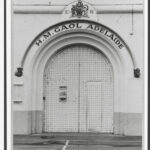

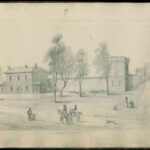
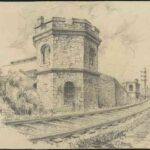
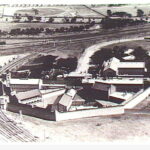
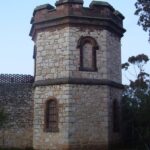
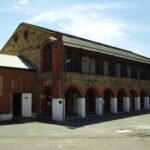
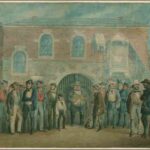



Comments